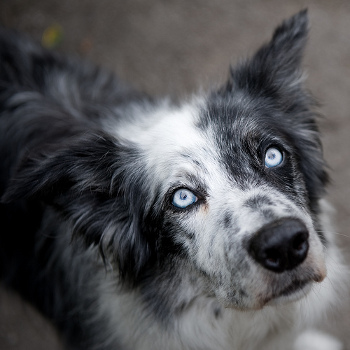
The merle gene — a pattern, not a color — dilutes the color of a dog’s coat, causing it to appear lighter, with patches of white, although prominence and variation is not always the same.
Dark coats can appear to have a bluish tint to them and a blue color visible in the iris of the eyes.
Light-colored coats with the merle gene may have patches or tints of pink, orange or white; their eyes can be affected similarly or appear blue. The nose and paws can also be affected by the color variations.
Some merle dogs are odd-eyed, with one blue and one brown eye — or sometimes blue and brown in one eye.
Breeds most notably affected by the merle gene include shepherds, collies and sheepdogs. Also affected are Dachshunds, Pomeranians, Chihuahuas, Pit Bull Terriers, Cocker Spaniels and Great Danes.
A single merle gene can produce results as harmless as fur or eye color and as difficult as loss of eyesight or hearing. However, mating two dogs with the merle gene can produce offspring with a homozygous double merle gene, sometimes known as “lethal white” or “double-blue.”
Dogs with the double merle gene are mostly white and usually deaf, blind or both. The possibility of other physical limitations and conditions remain, such as a dog being born without eyes, paws or other vital organs.
Some breeders will breed single merle gene carriers with non-merle gene carriers in an attempt to obtain the unique blue-merle color, while reducing the possibility of vision or hearing deficiencies.
If you do get your dog from a breeder that is aware of the merle gene in their dogs, be sure to ask about the parents and the offspring.
If you plan to breed a dog with the merle gene, you should not breed it with another of similar genetic makeup.
If lucky, the dog will be colorful and healthy, but there is a substantial chance that the double merle gene offspring could be blind, deaf or both.
In other words, don’t do it. A pretty coat is nice, but is it worth the risk?
This pet health content was reviewed for accuracy by a veterinarian, Dr. Pippa Elliott, BVMS, MRCVS. It was last reviewed and updated Feb. 4, 2019.



